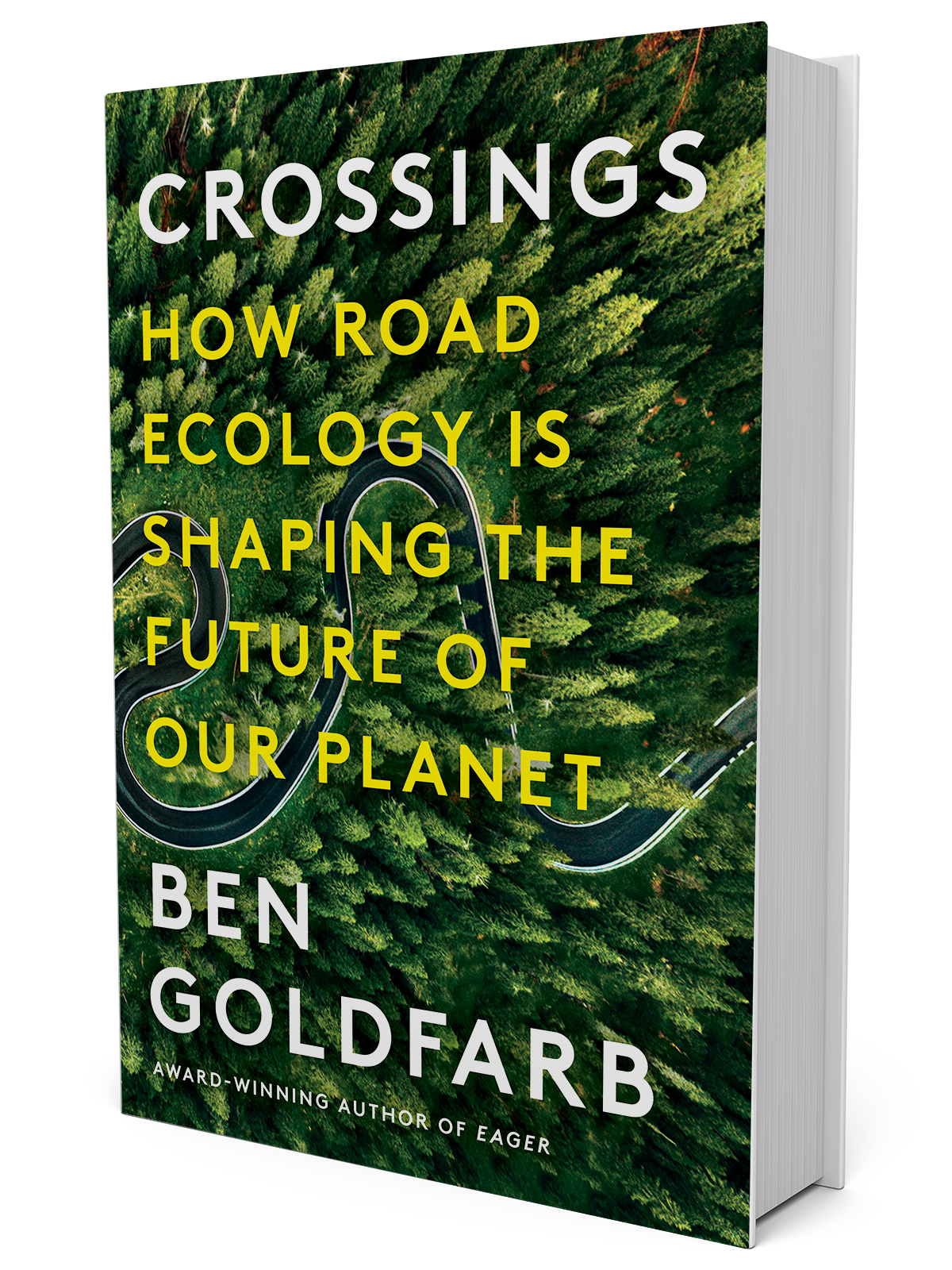The Local newsletter is your free, daily guide to life in Colorado. For locals, by locals.
Ben Goldfarb has only seen a wolf once. It was pooping in a parking lot in Yellowstone National Park. “This glorious animal was just trotting across a square of asphalt,” Goldfarb says, “and stopped to do its business.” It wasn’t the first time he’d seen an animal confront—and fail to navigate—the infrastructure we’ve created in the name of human mobility. The Salida-based environmental journalist spent much of the past decade reporting Crossings: How Road Ecology Is Shaping the Future of the Planet.
The book, which was published last month, examines the impact dirt double-tracks, four-lane freeways, and continent-spanning interstates can have on species around the world, from the kangaroos orphaned by Tasmania’s narrow highways to the Colorado stretch of I-70 known as the Berlin Wall for wildlife. Goldfarb, who is 36, is acutely aware of how ironic it is that his book wouldn’t have been possible without an automobile, and he knows that the tens of thousands of miles he estimates he drove while reporting it make him complicit in the destruction of nature he documented. “If highways are forces of freedom for us, they’re basically prison walls for other animals,” he says. “That tension is what the book is fundamentally about.”
The dichotomy isn’t limited to his road trips. To appreciate nature and to want to protect it, you have to experience it, and that usually means getting in a vehicle. “Roads have been integral to the history of conservation,” Goldfarb says. Most of our national parks, for instance, were designed specifically to give motorists a car window into the nation’s wildest ecosystems, and as his wolf encounter so poignantly illustrates, that made wild space fundamentally less wild in the process.
Whether or not roads create more bad than good, one thing is certain: The future does not promise fewer of them, especially in Colorado, where we routinely expand interstates to accommodate an ever-growing number of drivers. Road-trippers and commuters will go on squishing frogs and walloping insects with their windshields, and asphalt barriers will continue to restrict migration.

Goldfarb’s book acknowledges this inevitability, but it also points to potential, if partial, solutions, such as wildlife crossings: land bridges and grassy underpasses that help animals safely cross roads. Such projects have support across the political spectrum, and two structures are in the works in Colorado, one that will allow lynx to cross I-70 at Vail Pass and another that seeks to reduce collisions between drivers and deer on U.S. 160 near Durango. Although such strategies may help mitigate the environmental damage that roads cause, the only way to stop it completely is not to drive. And that’s not going to happen. Even the most ardent conservationists still get behind the wheel, or as Goldfarb puts it in Crossings’ introduction: “I at once cherish animals and think nothing of piloting a three-thousand-pound death machine.”
If you can stomach a road trip, Goldfarb will be reading from Crossings at Telluride’s Wilkinson Public Library (October 11), Colorado Mesa University Montrose (October 12), and Paonia’s Paonia Books (October 13).









